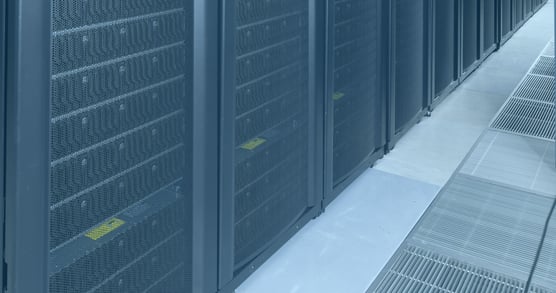
Maintaining an optimal temperature within a data center is vital if you want to keep those invaluable servers humming along at peak efficiency. Your goal is to keep internal temperatures at a constant rate. This can be challenging as the seasons transition because the external temperatures fluctuate daily, if not hourly.
Effectively managing data center seasonality is the key to keeping your facility running. However, it can be quite expensive to do, especially when external temperatures soar into the 80s and 90s. Fortunately, using a few proven strategies, you can combat the heat and prevent significant drops in performance.
Related: How Temperatures Affect Data Centers
What Is Data Center Seasonality?
You may not be familiar with the phrase “data center seasonality.” However, you have most certainly encountered it at your facility.
Data center seasonality refers to the changing temperature regulation demands of data centers throughout the year. When the external temperature drops below the minimum operating range as set by ASHRAE (American Society of Heating Refrigerating and Air Conditioning Engineers), you need to increase internal temperatures.
On the other hand, you must increase the flow of cool air when the surrounding climate begins to warm. As noted above, this can be quite challenging in times of rapidly fluctuating temperatures.
Overcoming data center seasonality is imperative if you want to protect your servers and continue to provide reliable service to consumers.
Ways to Prepare for Summer
Combating rising temperatures is best achieved through a multifaceted approach. Simply bumping down the thermostat will become extremely costly if that is your sole course of action.
In fact, you may want to adjust your thermostat upward by a few degrees, especially if your facility is operating towards the lower end of ASHRAE’s guidelines. Every degree you bump up will decrease your utility bill.
Generally, you should begin this process a few weeks to a month before you are expecting significant temperature increases. If you suddenly increase internal temperatures by 4 or 5 degrees, you can significantly strain your servers and even cause a serious failure. Instead, increase the settings by 1 degree each week until you have reached the upper end of ASHRAE ranges.
Perform Routine Maintenance as Scheduled
Running a data center can be quite hectic at times. The constant hustle to provide service can mean that maintenance cycles can be overstretched. However, putting off maintenance now to save a few bucks can cost you in the long-run, especially in the hottest months of the year. Ensure that all maintenance is done on time to be able to keep your facility operating at its best.
Optimize Airflow
Cooler air will naturally flow downward as it is pushed out of the way by warmer, rising air. This cool air can creep out of your server rooms through small gaps in doors, floors, and ductwork that is being used for cables. By filling these voids, you can ensure that the cool air will stay where it should as the warm air is filtered out through return vents.
Improve Your Temperature Management Approach
One of the best things you can do to regulate temperatures within your facility effectively is to reassess your current strategies. This includes having your HVAC system inspected, conducting an efficiency audit, and ensuring that all cooling system components are working as designed. However, doing all of this in-house can be impractical and time-consuming.
The best approach is to contact Tate Engineering. We can simultaneously improve the efficiency and safety of your facility using our decades of industry experience. If you are ready to get started, contact us today!
